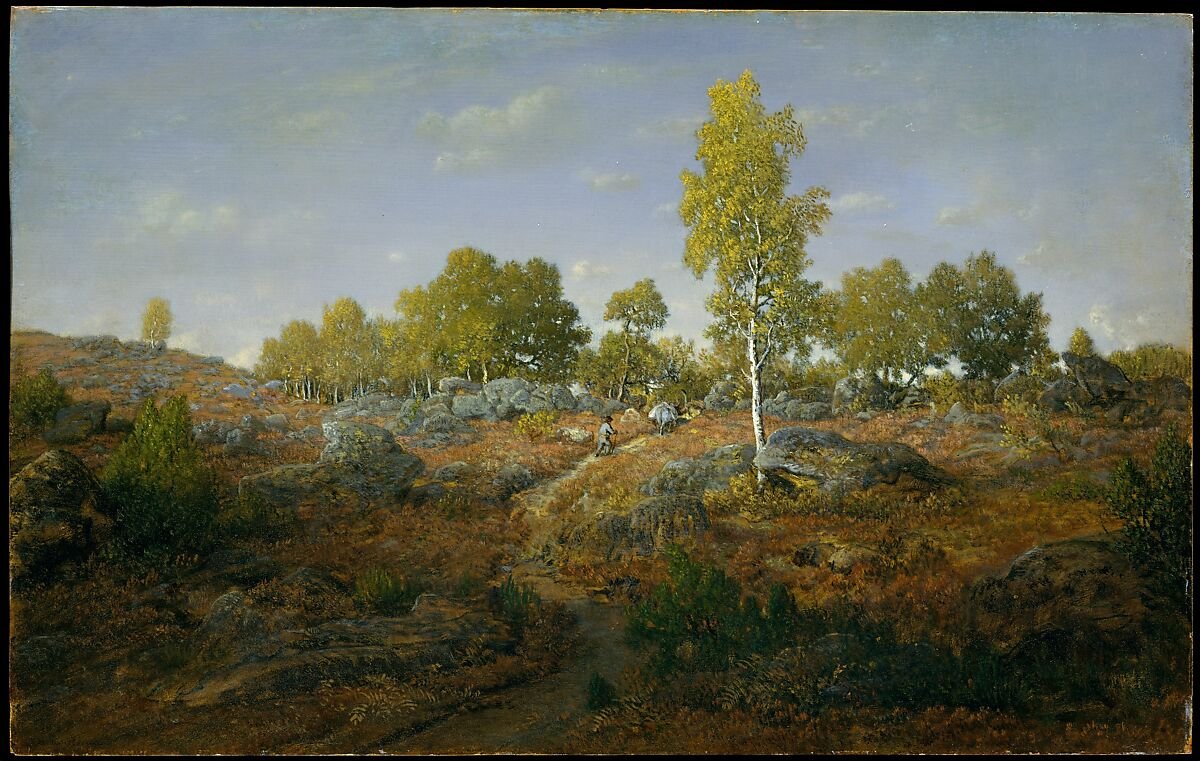
It was only in the Salon of 1848 that the government of the Second Republic reduced the power of the Salon jury. This allowed Rousseau to receive a medal for his work after years of exclusion from it. However, his works were again poorly placed in the following years, leading him to be a prominent figure in the Salon des Refusés in 1863, where works rejected by the official Salon were exhibited.
"An Early Summer Morning in the Forest of Fontainebleau" represents a tranquil forest at dawn. In this work, Rousseau invites viewers into a peaceful realm where the first soft rays of the sun go through the branches of ancient trees, almost awakening the forest. The painting seems to be alive due to the fresh, cool hues of early morning. The sky, painted in pale blues and delicate pinks, suggests the tender light of sunrise, creating a peaceful glow over the landscape. The leaves are drawn with short, precise brushstrokes, demonstrating the presence of the wind within the painting. Rousseau's brushwork creates a tapestry of shadows and sunspots, indicating the uneven terrain and the rich variety of flora. Moreover, the interplay of light and shadow contributes to the depth and realism of the scene. The forest is shown not only as a still landscape but as a living, changing place that holds the promise of a new day.
This painting evokes an emotional response, drawing viewers into a contemplative state that reflects the Barbizon School’s desire to connect emotionally and visually with the landscape. It is a meditation on nature's quiet power and majesty, encouraging a respectful and thoughtful consideration of the environment.